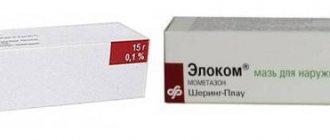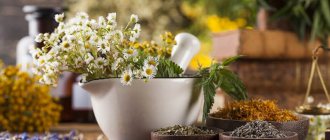- Composition and beneficial properties of calendula
- The effect of calendula ointment on the human body
- Indications for use of calendula ointment
- Contraindications to the use of calendula ointment
- Calendula ointment - we prepare it ourselves How to prepare calendula ointment?
- How to prepare your own calendula flowers?
| Calendula ointment, by its very name, communicates the naturalness of its origin. Both old and young know that calendula is a very useful plant, which serves as the basis for the production of many medicinal potions - decoctions, tinctures and, of course, ointments. |
Composition and beneficial properties of calendula
Calendula ointment , sold in pharmaceutical outlets, usually consists of an active substance, which is a calendula tincture, and excipients.
The latter give it a certain shape and these are usually different concentrations of purified water, emulsifiers, petroleum jelly, cocoa butter. In order not to act as an excipient in the composition of the ointment, its entire therapeutic effect is determined by the content of calendula extract.
This red flower has long been seen to have a positive effect on the human body. Since then, it has been actively prepared; calendula extract in the form of decoctions, tinctures, and ointments is used mainly for external use, but sometimes also for internal use.
What is so remarkable about calendula? Calendula flowers and roots contain essential oils, organic acids, and many trace elements. The main active ingredient in the flower is the bitter substance of the same name, calendin; activity is also demonstrated by:
- riterpenoids,
- flavonoids,
- carotenoids,
- phytoncides,
- essential compounds,
- organic acids - pentadecylic, malic, salicylic,
- trace elements - potassium, calcium and magnesium,
- tannins,
- resins,
- saponins,
- glycosides,
- mucus.
Carotenoids provide the plant with an orange color, essential oils produce aroma, flavonoids provide anti-inflammatory and disinfectant effects, and antioxidants slow down oxidation. The main beneficial properties of calendula are in the flowers, slightly less microelements in the stems and leaves. The roots are rarely used as a component of medicinal preparations.
Observations and medical studies have proven that calendula produces the following beneficial effects on the human body:
- anti-inflammatory and antimicrobial;
- bactericidal and wound healing;
- strengthening the walls of blood vessels;
- stimulating the process of cell regeneration;
- calming effect on skin prone to irritation;
- regulation of the sebaceous glands;
- moisturizing and protecting delicate baby skin;
- strengthening hair and stimulating its growth.
Use in cosmetology
When applied topically to the skin, the drug nourishes it with vitamins and stimulates the production of retinol. This substance is extremely necessary for maintaining youthful skin, improving appearance and complexion. Regular application of the ointment helps prevent wrinkles and eliminate existing wrinkles.
Calendula ointment is a universal facial care product. In addition to the properties described, it will be useful for those with problems such as oily skin and acne:
- reduce the number of rashes;
- tightens pores;
- will normalize the function of the sebaceous glands;
- will reduce the production of oil by the skin;
- will reduce the number of blackheads and ulcers.
For hyperpigmentation, the ointment whitens the skin, gives it a radiant appearance, and reduces the number of freckles. It is an excellent protective agent against ultraviolet radiation and relieves irritation after hair removal. The drug is great for cracks and roughness - it softens the skin, allows you to exfoliate and remove dead cells. Calendula will also help with spider veins, spots, redness of the face and other areas of the skin. With its help you can care for the skin of your hands, feet, and mammary glands at any age.
The effect of calendula ointment on the human body
Due to the content of a mass of natural substances with healing effects, the result of using calendula ointment often exceeds modest expectations. Experience with the use of calendula ointment shows that its consequences are:
- wound healing effect,
- bactericidal effect,
- disinfectant effect,
- anti-inflammatory effect,
- softening effect.
Calendula ointment has a positive effect on the condition of the skin, in particular it tightens pores and regulates the production of sebum if there are problems such as acne. The ointment is able to regulate the secretion of sebum, promotes skin renewal, softens it and is indispensable for:
- cracks,
- scars and damage to the skin,
- varicose veins,
- acne,
- inflammatory processes on the skin.
Interestingly, calendula ointment regulates oil secretions on the skin, which means it is relevant for oily skin types, as well as being able to eliminate dry skin. The ointment is indispensable on cold winter days, when it is recommended to apply it to the face to avoid cracking, dryness and frostbite. Calendula extract should not be ignored on the hot days of summer - then it will save you from sunburn and, in general, the not very favorable effects of ultraviolet radiation.
The anti-inflammatory effect of calendula ointment is revealed when it is used against insect bites, cuts, eczema and abrasions - then the ointment will prevent inflammation and relieve pain, promote speedy healing and convergence of hematomas.
Indications for use of calendula ointment
Calendula ointment is a product for external use, and therefore the main indications for this are pathological abnormalities of the skin, any damage to them:
- infected wounds, burns, cuts and other minor injuries to the skin;
- anal fissures;
- varicose veins of the lower extremities, thrombophlebitis;
- bedsores and trophic ulcers.
Using calendula ointment , you can get rid of inflammation and pain:
- for insect bites,
- for itching and burning,
- for eczema,
- for cuts and abrasions,
- with hematomas.
Instructions for use
The method of using the product depends on the type, location of the pathology, and its severity. Calendula can only be used externally, and the application area must be clean, dry, and free of grease.
The method of treating burns and wounds is as follows:
- Wash and dry your hands. Take a small piece of ointment.
- Apply the product and distribute with light rubbing movements.
- Leave on skin until warm.
- Cover the application site with sterile gauze. Cover the skin with a bandage to secure the gauze.
- The dressing needs to be changed 3 times a day.
Wounds with purulent manifestations should first undergo primary surgical treatment, and only then use calendula ointment.
Trophic ulcers are treated with compresses with ointment. A 2 mm layer of ointment is applied to sterile gauze and tied to the affected area. Place parchment on top, then secure with a cloth. Do the procedures once a day, keep the compresses for at least 3 hours. The course of therapy is 21 days.
Before treating trophic ulcers, it is recommended to lubricate the diseased areas with zinc ointment - it has drying properties.
To treat hemorrhoids and anal fissures, make a small tourniquet of gauze, soak it in ointment, and place it in the anus after defecation or an enema. Course - 10 days twice a day
. For varicose veins and thrombophlebitis, apply ointment to the legs three times a day for up to 3 months. For psoriasis, apply the ointment to the plaques after quartz treatment and bath for 7 days.
Contraindications to the use of calendula ointment
Calendula ointment is a herbal medicine for external use, the use of which has virtually no contraindications. The ointment can be used daily; it has no contraindications or side effects. This is an excellent product for maintaining youthful and healthy skin, which allows it to be used in preventive measures and in the field of cosmetology, as well as to eliminate unwanted problems and skin diseases.
There are a huge number of indications for the use of the ointment, and despite the fact that contraindications are not classified as a separate category, it is a good idea to discuss its effectiveness and relevance for a specific problem with your doctor. In addition, it is not recommended to continue using calendula ointment if the symptoms of the disease do not improve or disappear within 3-5 days, if the condition of the skin surface worsens. Allergy sufferers and those who experience hypersensitivity to the components of the drug should be careful when using calendula ointment.
It is acceptable to use the ointment by pregnant women and young children, but consulting a doctor in this case would be entirely appropriate.
Calendula ointment - we prepare it ourselves
Calendula ointment can be purchased at a pharmacy kiosk, but it applies not only to pharmaceutical, industrially manufactured products. It is also a traditional medicine, which from time immemorial has been prepared independently using improvised means and independently prepared herbal ingredients.
By preparing calendula ointment yourself, you can be sure of the naturalness and exceptional usefulness of the resulting substance, but take note that it may not be stored as long as the factory equivalent, and the preparation procedure itself will require diligence and adherence to the sequence of steps so that the product turns out to be truly healing and suitable for use.
How to prepare calendula ointment?
For those who feel the strength for culinary and medical achievements, several homemade recipes for calendula ointment .
Recipe No. 1
- you will need: 50 grams of powdered (or crushed) calendula flowers;
- 200 grams rendered lard
- build a water bath;
Recipe No. 2
- you will need: 40 grams of cocoa butter;
- 40 grams of crushed beeswax;
- 50 grams of dried calendula flowers;
- 500 ml olive oil;
- Place calendula in a glass jar (for example, 600-700 grams in volume) and pour in olive oil (its analogue can be peanut oil);
How to prepare your own calendula flowers?
If you consider it necessary not only to prepare calendula ointment , but also to prepare flowers, take note of the following tips:
- in folk medicine, calendula flowers are usually used, less often - leaves, stems and roots;
- Plants that have just bloomed are suitable for harvesting; as days pass, the flowers lose their beneficial properties;
- observing the development of calendula, start collecting as soon as you find that half of the flowers have bloomed;
- calendula blooms all summer, but there are several waves of preparations - as soon as half of the flowers have bloomed, three days after that and another five days later;
- You need to pick flowers early in the morning, as soon as the morning dew has disappeared;
- It is necessary to collect flowers with a small piece of the peduncle so that the bottom of the flower is not damaged;
- freshly picked calendula flowers must be laid out for drying - under a canopy outside or in a closed, but well-ventilated and warm room;
- flowers are laid out on paper or cardboard in a thin layer so that one flower does not lie on top of another;
- during the drying process, it is necessary to turn the flowers over once every 1-2 days, otherwise they may rot and will not become suitable for use;
- calendula is considered dried when, when you lightly press the bottom with your finger, the flower crumbles;
- dried calendula is stored in fabric or paper bags in a cool room, it is recommended to hang them, not come into contact with other plants and in no case expose them to moisture;
- It is recommended to use dried calendula over the next 2 years, after which it will begin to gradually lose all its beneficial properties.
Method of using calendula ointment and dosage calculation
There are a number of rules according to which it is necessary to apply calendula ointment to the skin:
- it should be a clean and dry skin surface;
- if there are wounds or suppuration on the skin, it is recommended to thoroughly clean it before applying the wound;
- spread the ointment in an even layer over the surface of the lesion, rubbing in lightly;
- when a slight sensation of warmth appears, it is time to cover the damaged surface with a gauze cloth and apply a sterile bandage;
- then wash your hands to remove any remaining ointment;
- repeat the procedure 2-3 times a day.
Calendula ointment is used in the form of applications, compresses, and some variations in application methods are possible depending on the problem:
- for burns, wounds, abrasions, bandages are applied - the ointment is lightly rubbed in;
- for trophic and varicose ulcers, applications are applied - the skin around the ulceration is cleaned and treated with zinc ointment, the ulcer itself is lubricated with calendula ointment in a thick layer without rubbing; parchment and a gauze bandage are applied on top;
- for anal fissures, tampons are inserted 1-2 times a day after defecation or a cleansing enema;
- for varicose veins and thrombophlebitis, applications are applied - a thick layer of ointment is not rubbed in, it is covered with parchment paper under a gauze bandage.
The volume of ointment applied is determined by the source of damage. For example, 2-4 grams of ointment (equivalent to a strip 2-4 cm long) should be enough for a lesion area of 400-800 cm2 (equivalent to the area of the knee joint or sacrum). Calendula ointment is used 2-3 times a day, the course of treatment can take several weeks (for ulcers), several months (for varicose veins), and sometimes several days (for abrasions).
In addition, calendula ointment can be used in preventive measures, for rough skin or to regulate sebum production. In this case, the ointment is applied in a thin layer as needed. It is used as long as there is a need, perhaps not daily, but several times a week.
Effect of the drug
The external preparation Calendula ointment is used to treat diseases in gynecology, dermatology, proctology, allergology, and cosmetology. The ointment has a local anti-inflammatory effect due to the presence of esters and flavonoids. The latter have an antimicrobial, antifungal effect, and reduce the production of inflammatory mediators.
The ointment has a mild irritating effect, due to which it creates a feeling of warming the tissues and reducing pain symptoms.
Calendula also has a reparative effect.
It promotes the healing of damaged skin and mucous membranes, and stimulates regenerative processes. Therefore, the product is indicated to accelerate the healing of wounds, abrasions, and other areas where the integrity of the skin is compromised.
WE RECOMMEND THE ARTICLE!
With the help of chlorophyll, you can cleanse the body, improve the skin, and normalize collagen production. Read more >>
The vitamin composition of the drug helps:
- moisturize;
- rejuvenate;
- supply;
- improve color;
- smooth;
- eliminate scars, scars.
Applying the ointment helps eliminate swelling, itching, redness, and reduces intoxication. The drug has antioxidant properties - it blocks xanthine oxidase and radicals. Calendula also strengthens the walls of blood vessels and helps eliminate trophic disorders. Systemic absorption of the drug does not exceed 2%.











